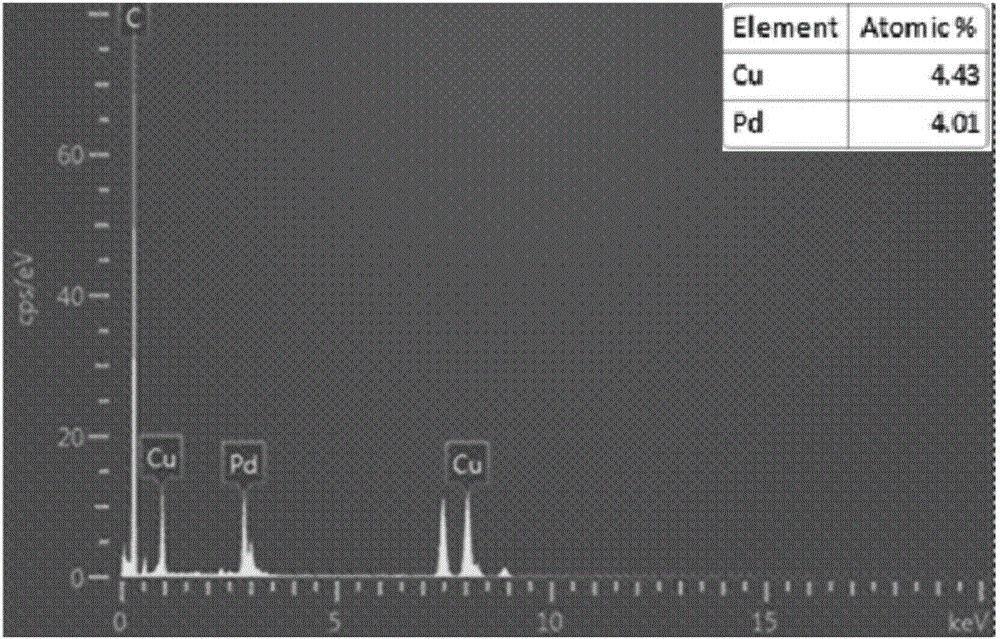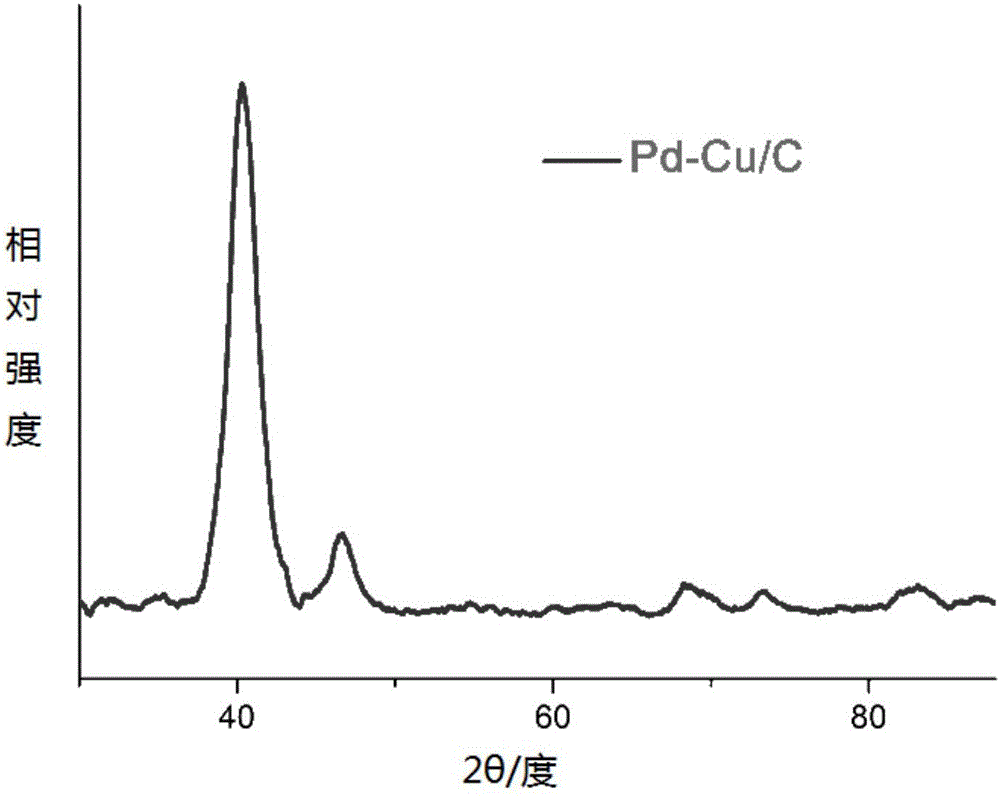Palladium-copper binary alloy nanometer material, preparation method thereof and application thereof of serving as catalyst for electrocatalytic reduction
A technology of binary alloys and nanomaterials, applied in the direction of metal/metal oxide/metal hydroxide catalysts, physical/chemical process catalysts, nanotechnology, etc., can solve the problem of poor kinetic performance of reduction reactions and insufficient stability of working electrodes , low utilization rate of electric energy and other issues, to achieve the effect of good conversion effect, easy realization and high conversion efficiency
- Summary
- Abstract
- Description
- Claims
- Application Information
AI Technical Summary
Problems solved by technology
Method used
Image
Examples
Embodiment 1
[0030] A preparation method of a palladium-copper binary alloy nanomaterial, which adopts the method of sodium borohydride reduction, and the specific operation steps are as follows: take sodium chloropalladate solution and copper chloride solution (the molar ratio of the two is 1:1), add 100 mg of activated carbon, add a small amount of high-purity tertiary water, ultrasonic for 30 minutes, then stir for 4 hours, add 10 ml of sodium borohydride solution, react in an ice-water bath for 1 hour, wash with high-purity water, and vacuum dry at 50°C for 12 hours to obtain The nano palladium copper material.
[0031] figure 1 It is the TEM figure of the palladium-copper binary alloy nanomaterial in the embodiment of the present invention one, as can be seen from the figure, the particle size average range of this palladium-copper binary alloy nanomaterial is 3 ~ 5 nanometers, and its particle size distribution is less than 10 nanometers.
[0032] figure 2 It is the energy spectr...
PUM
 Login to View More
Login to View More Abstract
Description
Claims
Application Information
 Login to View More
Login to View More - R&D
- Intellectual Property
- Life Sciences
- Materials
- Tech Scout
- Unparalleled Data Quality
- Higher Quality Content
- 60% Fewer Hallucinations
Browse by: Latest US Patents, China's latest patents, Technical Efficacy Thesaurus, Application Domain, Technology Topic, Popular Technical Reports.
© 2025 PatSnap. All rights reserved.Legal|Privacy policy|Modern Slavery Act Transparency Statement|Sitemap|About US| Contact US: help@patsnap.com



